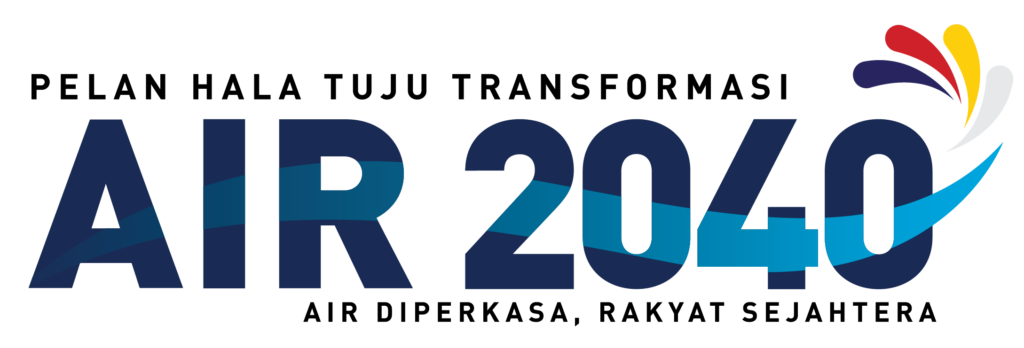Malaysia’s WST2040: Transforming the Country’s Water Sector
Malaysia’s Water Sector Transformation 2040 (WST2040) is a national agenda aimed at transforming the country’s water sector into a dynamic and vibrant economic sector that can contribute significantly to the national GDP and provide good quality and affordable water to the people. It is strategically designed to improve water management, governance and infrastructure, ensuring sustainable water supply for the future. WST2040 also aims to address current challenges and anticipate future demands while aligning with broader national development goals.
The Water Sector Transformation 2040 outlines several vital components to be achieved by 2040, namely, public awareness, smart technologies, data integration, virtual water, climate change adaptation, new economic sector, financing mechanism and Water-Food-Energy nexus.
Public awareness and education
WST2040 focuses on education, awareness-raising, advocacy and capacity building related to water resources management, which is centred on four clusters: government, business, community and academia. It aims to increase effective participation of all stakeholders in planning, decision-making, implementation, monitoring and evaluation of the water sector. It also aims to ensure that the Malaysian population is made aware of the importance of rivers and river basins by 2040.
Smart technologies
The transformation plan promotes the integration and adoption of the Fourth Industrial Revolution’s (IR4.0)-based advanced technologies in water resources management towards an evidence-based, efficient and sustainable water sector. A high-tech equipped water sector is a prerequisite and will provide support in tackling water security challenges and accelerate its position as a dynamic growth engine to ultimately become the regional water industry hub.
Data integration
Data integration highlights the need for the country to establish a single-point reference centre that will provide reliable and quality water data and information, including primary and secondary water-related data. It will be a vital element in facilitating science-based decision-making, which is the key to a successful development of a data-driven water sector. Implementing smart technologies, such as IoT (Internet of Things), for monitoring and managing water resources, can improve efficiency in real-time.
Virtual water
This component emphasises the need to raise awareness about virtual water (VW) and water footprint (WF) amongst decision-makers and the public to ensure better planning, management and consumption of water. It addresses elements such as calculation of the national VW, establishment of WF inventory for selected economic sectors as well as the incorporation of WF elements in federal and state water governances.
Although virtual water and water footprint are relatively new concepts in Malaysia, elements to support water footprint initiatives are already in place. The National Water Balance System (NAWABS) was established from the National Water Resources Policy. The system was proposed as a comprehensive river basin management instrument. Through systematic and credible databases, the water footprint inventory can serve as a guidance in identifying the optimum water allocation for domestic, industry and agriculture consumption.
Climate change adaptation
WST2040 provides key strategies for strengthening climate change adaptation and leveraging integrated water resources management (IWRM) and water technologies. Strategic inputs and national strategies have been developed to enhance Malaysia’s adaptive capacity and build resilience for the water sector towards adapting to climate change.
New economic sector and financing mechanism
The transformation plan aims at enabling the transformation of the national water sector into a competitive and vibrant economic sector with a fully competent workforce that significantly contributes to the national GDP without jeopardising the sustainability and availability of resources and opportunities for the future generation.
The existing financing mechanisms across the water sector will be examined and alternative financing mechanisms will be explored and developed that are both sustainable and conducive to support the water sector in the future. The proposed mechanisms are a holistic system to ensure sustainability of the whole water sector value chain. WST2040 aims at ensuring a total government-society approach for an optimal return of value on water. It encourages public-private partnerships to fund infrastructure development and innovation as well as ensures that water tariffs are fair and reflect the cost of providing affordable services for all citizens.
Water-Food-Energy Nexus
The transformation plan focuses on the interconnection and roles of water, food and energy in ensuring security and sustainability for the people’s and nation’s development. It addresses the intricacies and interlinkages of the nexus to allow better balance trade-offs and synergies.
The transformation strategies will be implemented in 4 phases:
- Phase 1 (2021-2025): Accelerating adoption of Integrated Water Resources Management (IWRM)
- Phase 2 (2026-2030): Developing indigenous technology to be on par with international standards
- Phase 3 (2031-2035): Achieving economies of scale
- Phase 4 (2036-2040): Becoming the regional water industry hub
Through the Water Sector Transformation 2040 plan, the water sector will continue to focus on ensuring water security for all until 2040. The entire sector’s value chain will focus on strengthening water resources governance, financial sustainability and continuous engagement with the people as well as implementing the circular economy concept.

The ultimate goal of WST2040 is to provide reliable, affordable and sustainable water supply and services to meet the needs of a growing population and economy, while safeguarding natural water resources for future generations.

